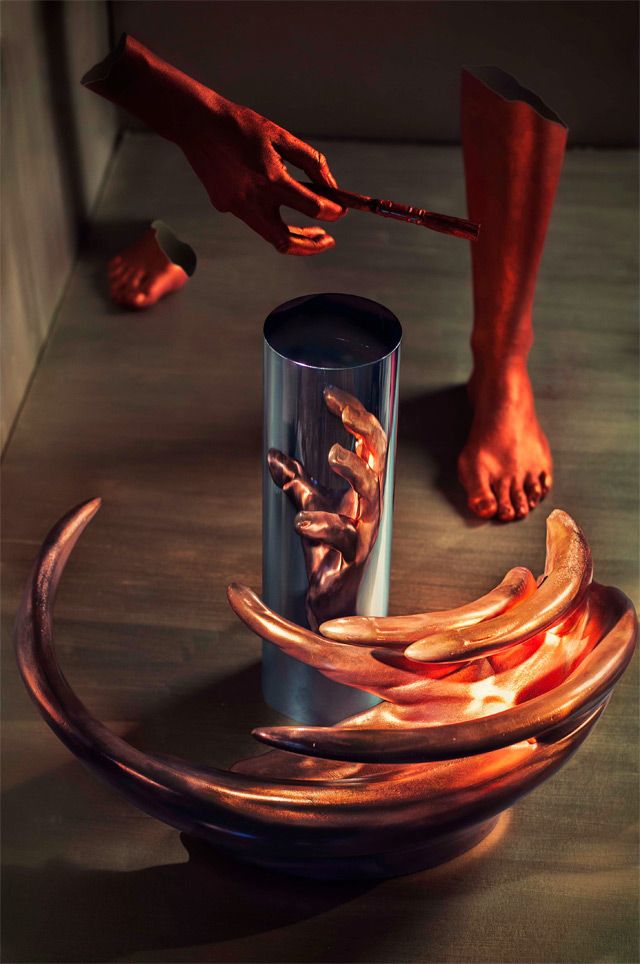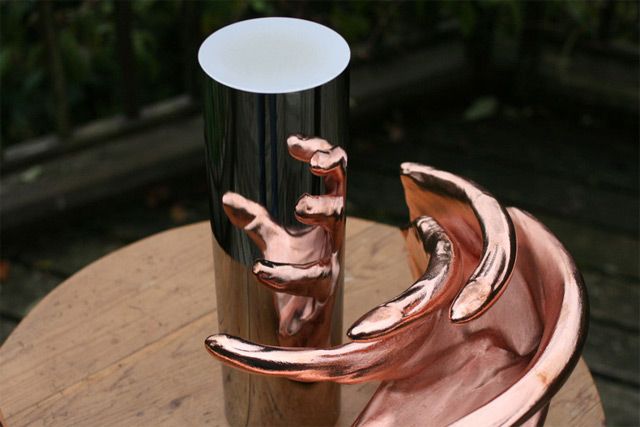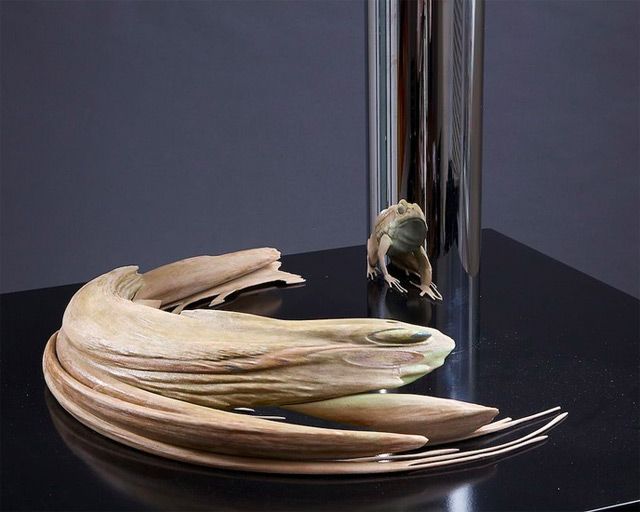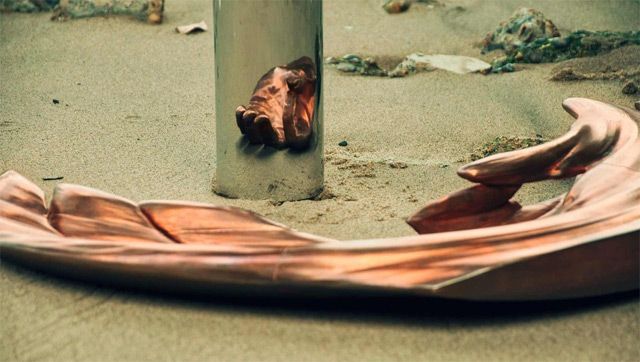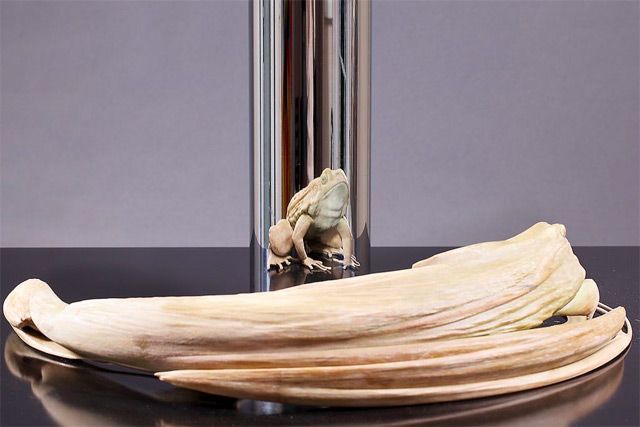I often think that there is not enough mingling of the sphere of mathematics with the sphere of the art world. The last time I really thought about their collision was during an ancient arts class where one of my professors explained the aesthetic qualities in observing architecture that utilizes the golden ratio.
But this morning I stumbled upon the interesting sculptures of Jonty Hurwitz (via Colossal) that really had me thinking once more about the blending of calculations and art forms. Technology plays a heavy hand in Hurwitz’ creations, allowing for the calculation of minute details that would otherwise be virtually impossible to produce the old-fashioned way. Hurwitz’s sculptures are anamorphic, meaning they depend on the combination of algebraic functions to determine the next sequence of equations that will determine the formation of the material of the sculptures. The sculptures themselves look like something out of a Dali piece–warped, melted, and distorted. It’s difficult to imagine that each divot shape in the copper, steel, perspex, or resin was critically meditated on by thousands of computer calculations prior to its tangible existence. What’s even more difficult to wrap your head around is that these sculptures are based off of picture scans of objects (hands and frogs).
Once scanned into a computer, Hurwitz manipulates them with software:
For the anamorphic pieces its an algorithmic thing, distorting the original sculptures in 3D space using 2πr or πr3 (cubed). Much of it is mathematical, relying on processing power. There is also a lot of hand manipulation to make it all work properly too as spacial transformation have a subtle sweet spot which can only be found by eye. Generally I will 3D scan my subject in a lab and then work the model using Mathematica or a range of 3D software tools. I think the π factor is really important in these pieces. We all know about this irrational number but the anamorphic pieces really are a distortion of a “normal” sculpture onto an imaginary sphere with its centre at the heart of the cylinder.
This cylinder he comments on refers to a cylindrical mirror which his sculptures bend around to be reflected. The reflection reveals the original picture scan which the warped sculpture is based off of. It’s like looking into a warped fun house mirror, except the roles become reversed–what if the warped image were the real-life dimensional object and the non-distorted form becomes the reflection? The precision of crafting these optical illusions is astounding, the concept of visual calculation even more so.
Hurwitz expresses his passion for creating such art forms in the following quote:
I have always been torn between art and physics. In a moment of self-doubt in 2003, I wondered into the National Portrait Gallery and stumbled across a strange anamorphic piece by William Scrots (Portrait of Edward VI, 1546). Followed shortly down the isle by The Ambassadors (Hans Holbein, 1533). My life changed forever. I rushed home and within hours was devouring the works of Escher, Da Vinci and many more. In a breath I had found “brothers” in a smallish group of artists spanning 500 years with exactly the same dilemma as me. Within two months I was deep in production of my first work. My art rests on the shoulders of giants, and I am grateful to them.
The golden ratio presents an interconnection between math and beauty, apparent in the very veins and fibers of nature with its perfectly closed forms observable in microscopic cell arrangements. That relationship between number calculation and art shows strongly in Jonty Hurwitz’s anamorphic work, on display at Kinetica Museum in London next month.
